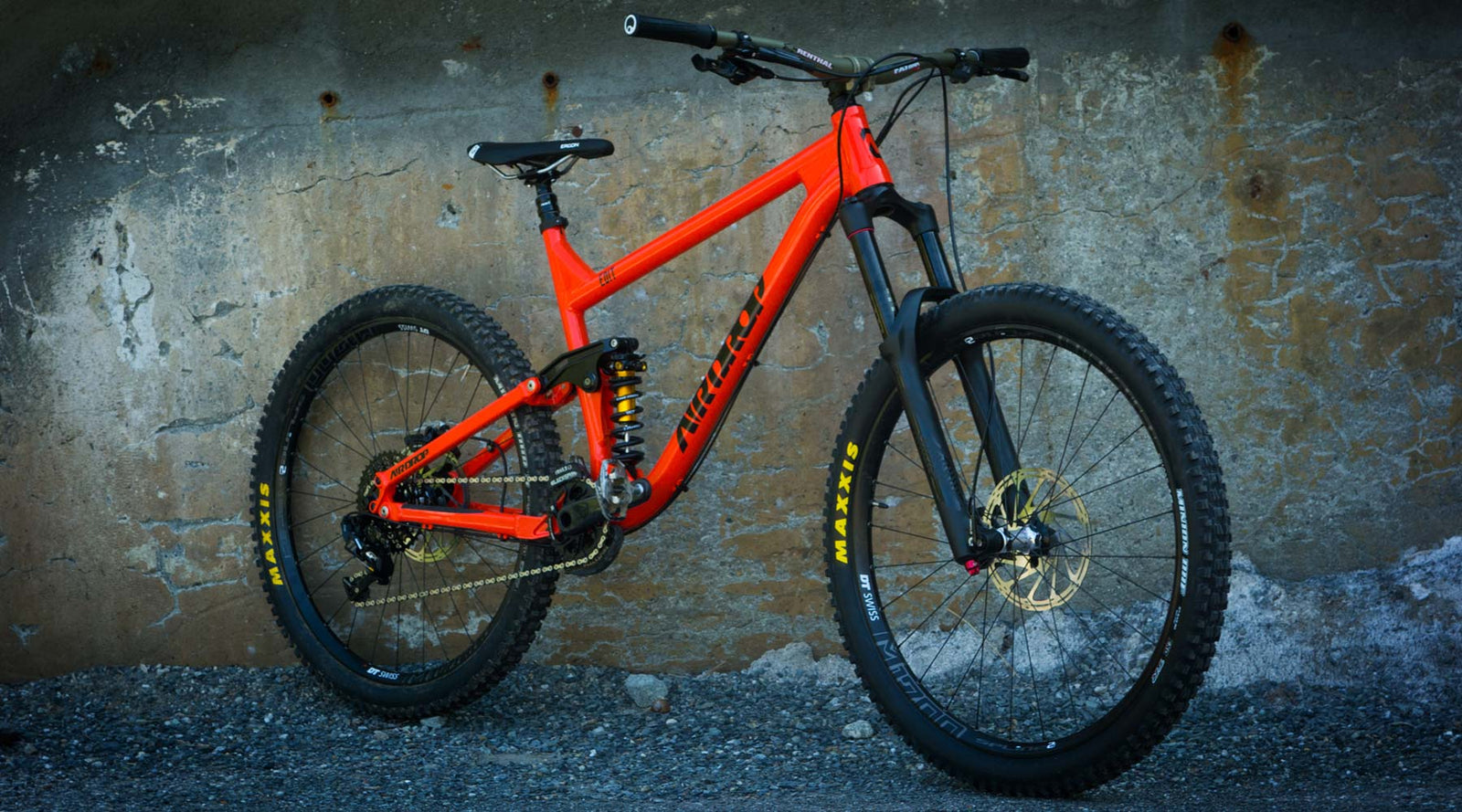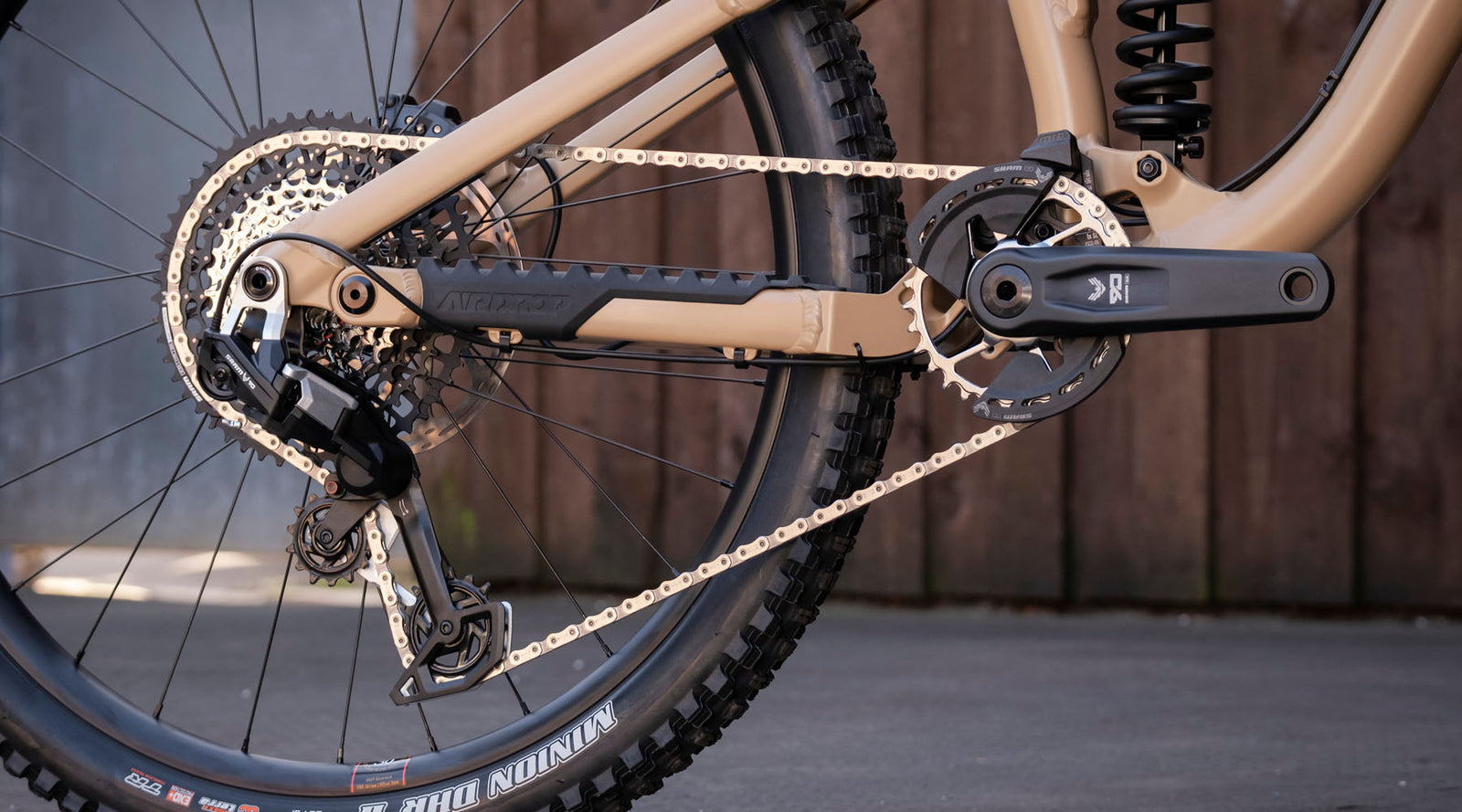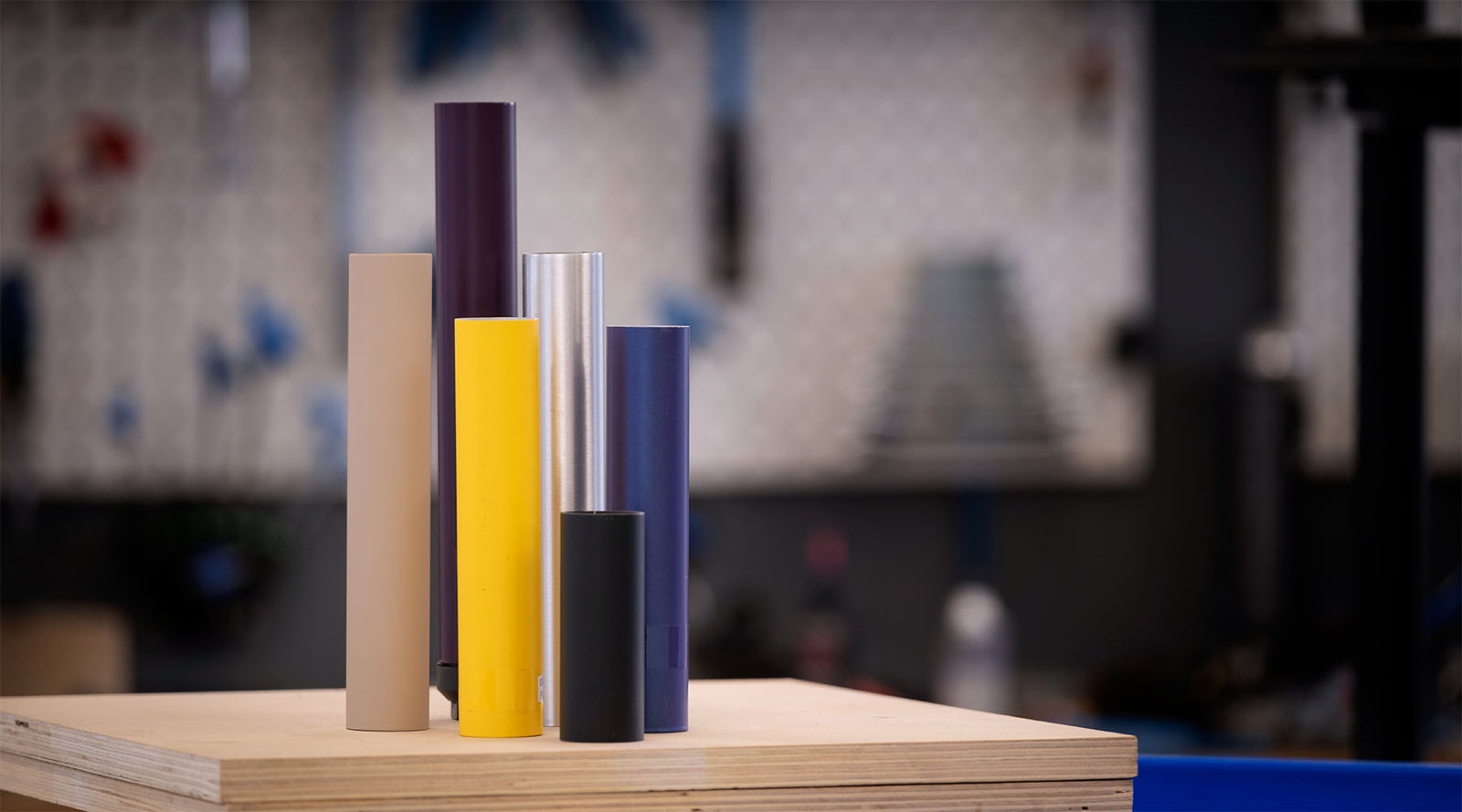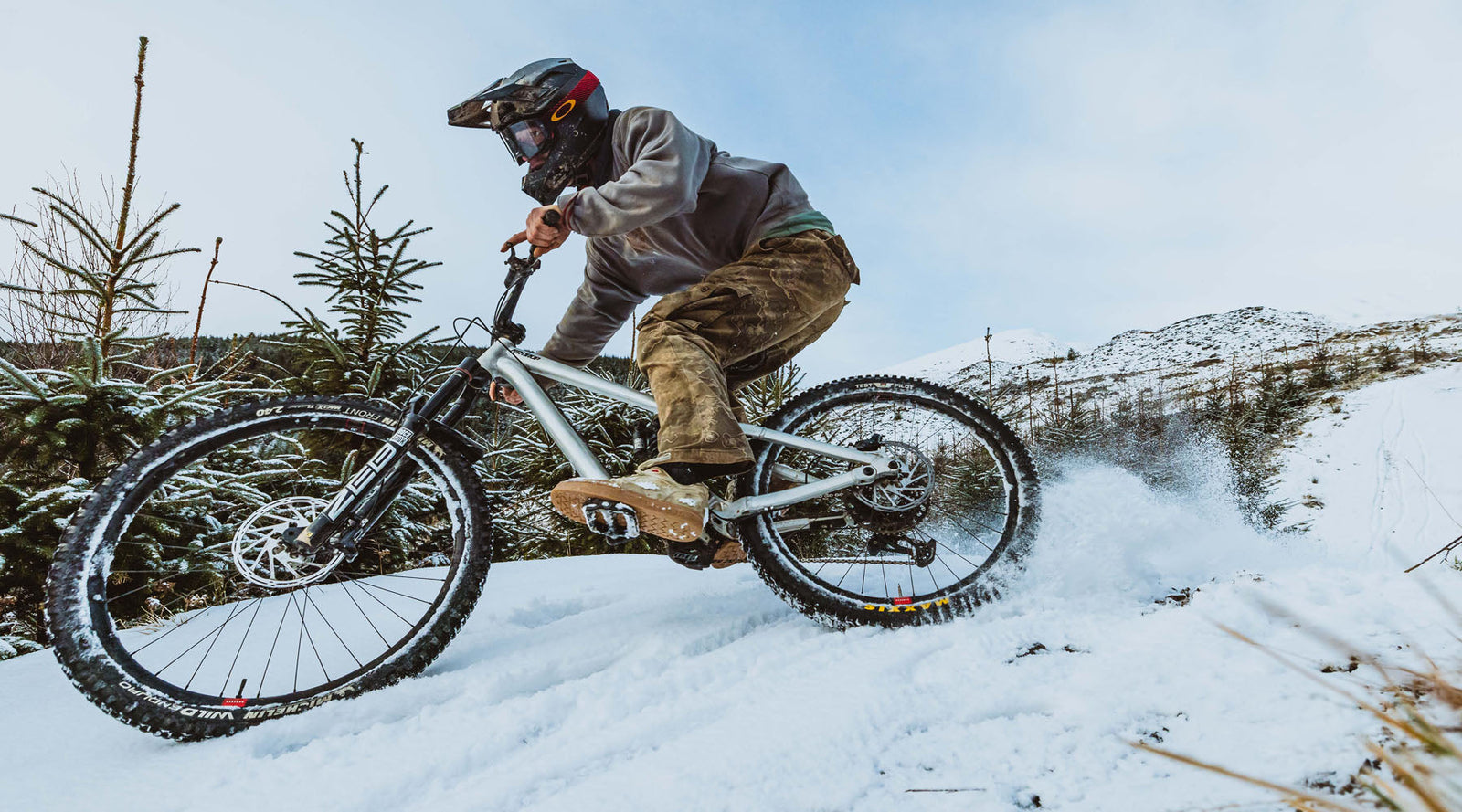
Bike Check: Graham's Edit v2
March 26, 2019
Graham's had his Edit for nearly two years and in that time he's covered 7100km with 534,000m of vertical. Yes you read that right.
Graham is a full time bike guide in and around Chamonix, so he looks for both performance and reliability from his bikes, which is what the Edit has always been about. Now that he's had his bike for 21 months and changed the bearings for the first time, we thought we'd check in and see how he's got on with the Edit v2.

Tell us a bit about yourself
Raced Downhill, built tracks and played in the street. moved from the Highlands of Scotland to the higher lands of Chamonix and became a bike guide and blogger at www.chamonixbikeblog.com (if you want to know what's going on with trails in the Chamonix region, Graham's blog is the place to go - Ed)
Age: 38
Height: 6' (185cm)
Weight: 68kg
Years Riding: 25 (first race aged 13 - didn't we all ride bikes from being proper wee?)
Riding Background: Everything! Riding bikes is fun, why limit yourself to one bit of the game?
Riding Style: Enthusiastic, if occasionally lacking subtlety. Loves front wheel.
I'm originally from Oban on Scotland's West coast but now live in Chamonix which is a terrible place for riding bikes four months of the year and a perfect place the remaining eight. Being an MTB guide means that going out to look for new trails is work time, so I always have a good excuse to get out the house and play on the bike.
The terrain abut Chamonix is generally steep, rocky and technical, and the build of the bike reflects this. Riding here moves between pedalling (pushing) up everything you need to descend, to just lapping the lifts, to a mix of both. Finally, it's a bit embarrassing if your bike breaks when a client's doesn't, so reliablility is really important. And I hate punctures. That comes across in the build too...

Graham's Bike Spec
The starting point for Neil's bike was the Edit v2 frame with Cane Creek DBcoil IL. While that's now been discontinued, it has been replaced by the Edit v3 with Cane Creek DBcoil CS.
| Frame: | Airdrop Edit v2 in Large |
| Colour: | Orange with black decals |
| Forks: | Rockshox Lyrik RCT3 Solo Air 160mm |
| Rear Shock: | Cane Creek DBcoil IL |
| Headset: | Cane Creek 40 Series ZS44 / ZS56 |
| Stem: | Renthal Apex 35mm |
| Handlebars: | Rental FatBar Alloy 35mm Clamp, 800mm Wide |
| Grips: | Renthal Glue-ons |
| Seatpost: | Rockshox Reverb Stealth 150mm, 30.9mm |
| Seatclamp: | 34.9mm Black |
| Saddle: | Ergon SMA3 Sport |
| Brakes: | SRAM Guide RE Front & Rear |
| Rotors: | SRAM Centerline 200mm front and rear |
| Wheels: | DT Swiss M1700 27.5x30mm |
| Tyres: | Maxxis Minion DHF 27.5x2.3 Front / High Roller II 27.5x2.3 Rear |
| Rear Derailleur: | SRAM GX 1x11 |
| Cassette: | SRAM GX XG-1150 10-42t |
| Shifter: | SRAM GX 1x11Trigger with Matchmaker clamp |
| Cranks: | Truvativ Descendant Carbon 170mm |
| Chainring: | SRAM Narrow/Wide 32t in black |
| Pedals: | Shimano XT Trail |
| Chain: | SRAM PCX1 |
| Bottom Bracket: | SRAM GXP Team |
| Chain Guide: | Blackspire |
| Modifications: | n/a |
| Weight: | n/a |
Frame and Shock
Well obviously it's an Airdrop Edit v2 (size Large). There are some scars on the paint work from rubbing and uplifts, rocks and crashes, but otherwise it feels pretty much the same as the day I got it.
Fork
Rockshox Lyrik RCT3. I'll be honest, I was a little disappointed in the Lyrik at first. It worked well - better than the Pike I had before - but compared to the back of the bike it just felt a bit tight and lifeless. After a couple of lower leg services and loads of riding it loosened off and the bike balanced out more. It's still not quite the same quality as the combination of the coil shock and four-bar linkage, but there's not really anything close in weight or price that would perform as well as that, so I'm content with it now.
The stiffness and tracking can't be faulted, it still blows my mind what single crown forks can do, and after the initial loosening-off period the performance has been consistent. I currently run 85psi ad 1 token, though if I rode more Bikepark I'd put a second token in to counter my ability to case every jump on a hill, irrespective of the size.
Tyre Choice & Pressure
I really hate punctures, so more often than not the bike has front and rear dual-ply Maxxis, generally with a super-tacky compound. Either a Shorty or DHR II on the front and whatever part-work tyre that doesn't have any holes in it on the back (unless I'm racing, then a less worn DHR II gets pulled out the shed). I also run a Procore in the rear of the bike, mostly to protect the rim but also to help hold the tyre on the rim at lower pressures and to let me keep riding if I puncture and a tyre plug doesn't do the job. With tubeless the main cause of punctures for me seems to be slashing the casing, so with running lower pressures there's less chance of that. 22 psi in the front, 24psi in the back, but generally guesstimated using an averagely calibrated thumb and forefinger.
Shock
After at least 10 years of only owning air shocks, I thought it was time to run with #enduro fashion and try a coil again. The long descents I'm lucky enough to ride to my front door are hard on air shocks; they tend to overheat and perform inconsistently as the trail goes on. And on. With the Cane Creek there performance is identical from 2500m to 650m. The only time I notice a change in damping is as the temperature gets close to zero, where it starts to run slower. Not much to be done about that other than to open the adjustments a bit or head South until the temperature gets warm enough for the base settings to work...
For the terrain here the upgrade to the Cane Creek is so obvious it's almost not a question, but somewhere flatter with more pedalling I would be interested to try and air shock to take advantage of the sharpness they have, without worrying about the slight loss of traction and damper control compared to the coil.
Suspension Setup
Stiff up front, soft out back. The bike gets used on steep terrain and I'm most interested in the downs, so that's what it's set up for and that's what it excels at!
I've got a 400lb spring on the back, which for my 68kg is maybe a wee touch soft, but 450lb would be way too stiff and it's only really on flatter terrain or bad landings that I'd like a stiffer spring, so instead I just avoid those. When I've got my work rucksack on I'm at least 10kg heavier, but I'm also meant to have my sensible head on, so riding a bit slower means the setup balances out fairly well without having to play with springs or twiddle knobs.
The forks have a bit less rebound damping than the rear of the bike, the rear also has less low speed rebound than high speed rebound, all of which for me helps keep the balance between bike tracking well and not getting too lively, yet still able to pop over stuff using the terrain to help.
Cockpit Setup
Bar and stem length, width, height, rise and sweep are an expensive combination to dial, so having found something I like I kinda like to stick to it. My left wrist has a much reduced range of motion after breaking it pretty badly a few years ago, giving me an even smaller wee spot to aim for.
Renthal 35mm diameter Fatbars, cut down to 770mm width, paired with a 40mm reach Renthal Apex stem and 30mm of spacers puts me in a pretty happy place. Brake levers are slightly more downward angles than is fashionable in France for Enduro, but still fairly flat.
Drivetrain
My legs really like the idea of Eagle and that 50 tooth bailout cog, but I tag derailleurs on rocks with depressing frequency so I'm not sure I'd even get through a ride before the extra length of the 12 speed unit so to it's demise. GX 11 speed is as good as I need, and spares are easy to find.
The Blackspire bash guard and chain guide keep the damage limitation theme going. It just takes so much of the worry away as you bounce through rock gardens. And DH chain devices make trail bikes look 18% more gnar, so that's nice too.
Descendant carbon cranks and a wee bit of bling on what's already a well specced bike, whilst the electric tape hides the bling but adds protection. Who said humans were logical?
Brakes
Alpine trails are hard on brakes. I've never ridden anywhere that test them like it. Most local riders swap to 4-pot DH brakes pretty quickly. I used to put Shimano Zee's on my bike, however I thought it was time for a bit of an experiment. In the past I've owned SRAM Guides and they've felt good for the first 5 or 6 minutes of the decent but after that struggle with the heat build-up and the performance starts to vary. Enter the Guide RE: RE for R-Electric. They're a combination of the Guide level and Code caliper (the setup many of the SRAM riders on the world cup circuit were running in recent seasons) but sold at a bargain price. They're now easily my favourite brakes. Once the stock pads were binned they've performed perfectly, never changing bite point or feel no matter the length or severity of the descent.
The brakes are usually coupled with 200mm rotors front and rear. 200mm up front is standard in the Alps for stopping power. It's not completely necessary for the back but my left arm is still weak after the accident so the extra bit of power helps, and it also means I only have to carry one size of spare disc for trips and multi-day rides. When I'm not riding hard it turns out 200mm is maybe too much power at the back and the brake is a bit noisy if it's just being feathered. So I've put a 180mm on for now to be nice to everyone's ears.
Flats or Clips?
Both. There are good and bad thins about either choice, so I swap about between them to make sure I can enjoy the worst of both :-)
Dropper & Saddle
I've had a few Reverbs down the years, and they've all been absolutely fine for me, so a 150mm Reverb is on the bike. I sometimes wish I'd gone for the 170mm, but the engineer in me dislikes the amount of leverage on that, so 150mm it was.
Wheels
I've got to give a shout out to the DT Swiss E1700 Wheels. Chamonix is not very nice to wheels, these things have been skelped off near enough every rock in the valley and the front is still perfectly true. A month in Whistler and BC was enough to kill off the rear rim, but the EX471 replacement's lasted a full season of riding and guiding since so I can't complain about that.
Anything You Would Change?
The dual ply tyre weighs in at over 1.3kg or each and Procore adds another 220g so I'm trying things with a little less rotational mass for when the lifts are closed.
Favourite Components
The bike! As I clumsily alluded to earlier, this bike is way, way more than the sum of its parts. From my first tide on it I was giggling down the hill and going for more laps way after I should have finished for the day! Now, 21 months later, it's been abused for 7100km of across and 534,000m of down and the bike is still egging me on to do just one more lap.
Saying that the frame, the coil shock and the Guide RE brakes have all performed above and beyond expectations, so I'll flag those up.
Secrets and Setup Tips
Black electric tape is great for keeping cables neat and tidy, and you can hide a quick-link for your chain in there too so it's always to hand.
Ed Brazier
Ed is the owner of Airdrop Bikes. A former web and graphic designer, he sacked off his job one day and decided to start up a bike brand.
Leave a comment
Comments will be approved before showing up.
Also in Airdrop Bikes Blog

90 Series Transmission
March 27, 2025
SRAM just launched the new 90 Series Transmission. All the advantages of T-Type full mount drivetrain with the reliability of mechanical shifting? Sounds good. It's already available on the Edit MX...

New Frame Colours
February 18, 2025
With new batches of Edits and Slackers coming in (Fades just arrived), we've taken the opportunity to freshen things up with new colours.
Read More

Introducing Alf Raynor
February 12, 2025
We're stoked to announce that Alf Raynor is riding for Airdrop Bikes. Alf is likely the hardest man in MTB, he loves the Graft and goes hard on the build. His Raw style on the bike and commitment is something that has to be seen to believed; it's wild.
Email Newsletter
Our monthly email newsletter gets you access to all the good stuff before everyone else.
Get The Inside Line
We're always working on stuff behind the scenes and we'd like to share those stories with you. One email a month, and we make it worth a read.
Sign up to get the inside line.
